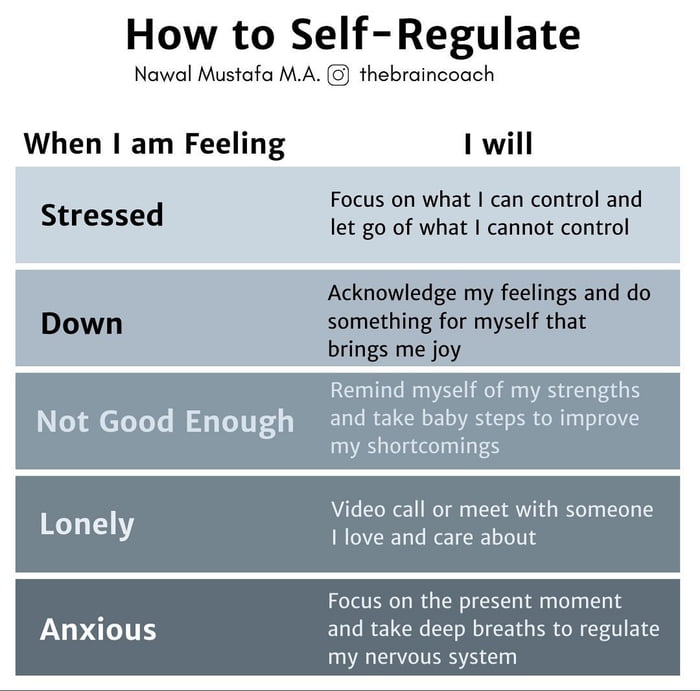Emotional Regulation Goals
Emotional Regulation Goals: Strategies for Achieving Emotional Balance
Emotional regulation is a crucial skill that allows individuals to effectively manage their emotions and respond to challenging situations in a healthy and productive manner. By developing strong emotional regulation skills, we can improve our overall well-being, enhance our relationships, and achieve greater success in various aspects of life.
In this post, we will explore the important goals involved in emotional regulation and provide effective strategies for achieving emotional balance. Whether you struggle with controlling your emotions or simply want to enhance your emotional well-being, this guide is a valuable resource to help you on your journey.
Goal 1: Identifying and Understanding Emotions

One of the first steps in emotional regulation is to identify and understand our emotions. Emotions play a significant role in our lives, and acknowledging their presence is essential for healthy emotional regulation. By recognizing our emotions, we gain insight into their causes and can start managing them more effectively.
To achieve this goal, consider the following strategies:
- Keep a journal: Maintain a journal where you record your emotions throughout the day. Describe the situations that triggered each emotion and reflect on the underlying reasons.
- Practice mindfulness: Engage in mindfulness exercises that help you become more aware of your present emotions. Take the time to observe and understand them without judgment.
- Seek professional help: If you find it challenging to identify or understand your emotions, consider seeking guidance from a therapist or counselor who specializes in emotional regulation.
Goal 2: Developing Healthy Coping Mechanisms

Another crucial aspect of emotional regulation is developing healthy coping mechanisms. When faced with challenging emotions or situations, having effective strategies to manage them can prevent feelings of overwhelm and promote emotional well-being.
Consider the following strategies to achieve this goal:
- Deep breathing exercises: Practice deep breathing techniques to calm your mind and body during moments of stress or intense emotions. Breathe in slowly through your nose, hold for a few seconds, and exhale through your mouth.
- Engage in physical activity: Regular exercise can help release tension and reduce stress. Consider including activities such as walking, jogging, yoga, or dancing in your routine.
- Practice relaxation techniques: Explore various relaxation techniques, such as progressive muscle relaxation, guided imagery, or meditation, to help calm your mind and achieve a state of relaxation.
Goal 3: Building Resilience and Mindset
One of the long-term goals of emotional regulation is building resilience and developing a positive mindset. Resilience enables us to bounce back from setbacks and challenges, while a positive mindset empowers us to approach difficult situations with optimism and determination.
Here are some effective strategies to help you achieve this goal:
- Cultivate gratitude: Practice gratitude daily by focusing on the things you appreciate in your life. This helps shift your mindset towards positivity and resilience.
- Challenge negative thoughts: Identify and challenge negative thoughts that may contribute to emotional distress. Replace them with positive and realistic affirmations.
- Seek support: Surround yourself with a supportive network of friends, family, or mentors who can provide guidance and encouragement during challenging times.
Frequently Asked Questions (FAQs)
Q: Can emotional regulation be learned?
A: Yes, emotional regulation is a skill that can be learned and improved with practice. By implementing various strategies and seeking professional help if needed, individuals can develop effective emotional regulation skills.
Q: How long does it take to improve emotional regulation skills?
A: The time it takes to improve emotional regulation skills varies from person to person. It depends on factors such as the individual's willingness to practice, the complexity of underlying emotional issues, and the consistency in implementing strategies. Patience and persistence are crucial in the journey towards better emotional regulation.
Q: Are there any potential barriers to improving emotional regulation?
A: Yes, individuals might face certain barriers while working on improving emotional regulation. These can include deep-rooted emotional patterns, past traumas, or underlying mental health conditions. Seeking professional help can be beneficial in navigating these barriers effectively.
Q: Can emotional regulation enhance relationships?
A: Absolutely. Effective emotional regulation skills contribute to healthier interpersonal relationships. By managing emotions, individuals can communicate more clearly, empathize with others, and handle conflicts in a constructive manner.
Q: What are the consequences of poor emotional regulation?
A: Poor emotional regulation can have detrimental effects on overall well-being. It may lead to increased stress, strained relationships, impaired decision-making abilities, and a higher risk of mental health issues such as anxiety and depression.
Start Your Emotional Regulation Journey Now!
Emotional regulation is a lifelong journey that requires dedication and practice. By setting clear goals and implementing effective strategies, you can begin developing these essential skills. Remember, seeking professional guidance is always an option if you need additional support along the way.
Pin On .road To Recovery
 Image Source : www.pinterest.de
Image Source : www.pinterest.de Emotion Regulation Skills Please Worksheet Psychpoint - Emotional
 Image Source : jonathonherman.blogspot.com
Image Source : jonathonherman.blogspot.com Emotional Regulation | Emotional Regulation, Recreation Therapy
 Image Source : www.pinterest.com.au
Image Source : www.pinterest.com.au PsychCreatives | Self-Regulation Adult Handout
 Image Source : www.psychcreatives.com
Image Source : www.psychcreatives.com regulation handout worksheet coping dbt yourtherapysource zones situations calming joyspring
Teaching Emotional Regulation Starts With Identifying Emotions And What
 Image Source : www.pinterest.com
Image Source : www.pinterest.com emotional identifying
Emotional Regulation At Parker Academy - Parker Education
emotional
Emotional Regulation - 9GAG
 Image Source : 9gag.com
Image Source : 9gag.com SCERTS Model: Emotional Regulation Goals * | Download Table
 Image Source : www.researchgate.net
Image Source : www.researchgate.net regulation goals scerts pesquisa fadu idoc edi mould patrocine doutorando infiltration nagpal arvind spheroid nab2 egf dependent vakinha investigating gamergate
Regulation goals scerts pesquisa fadu idoc edi mould patrocine doutorando infiltration nagpal arvind spheroid nab2 egf dependent vakinha investigating gamergate. Scerts model: emotional regulation goals *. Emotion regulation skills please worksheet psychpoint. Emotional regulation. Emotional identifying